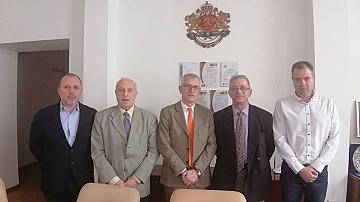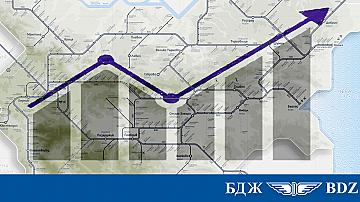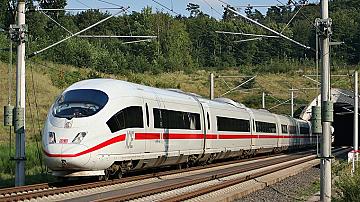Building the Narrow Gauge Railway
The narrow gauge railway project was designed by architect Stoyan Mitov, who was a descendant of the Kableshkovs, a prominent family from the Koprivshten Renaissance era. The implementation of the project was entrusted to the Labor Conscription, which had been introduced a year prior. Due to the challenging mountainous terrain and economic considerations, a non-standard narrow gauge of 760 mm was chosen. The construction work was carried out in three shifts, operating around the clock. The work is carried out manually. With the aid of controlled explosions, the workers managed to break through the rugged rocks in the inaccessible gorge of the Chepinskaya River.

Architect Stoyan Mitov as section engineer during the construction of the Septemvri - Velingrad line
The initial 39 kilometers of the railway line - the Sarambey-Ladzhene (Septemvri-Velingrad) section, were constructed over a period of 5 years. It was officially opened on August 1, 1926.
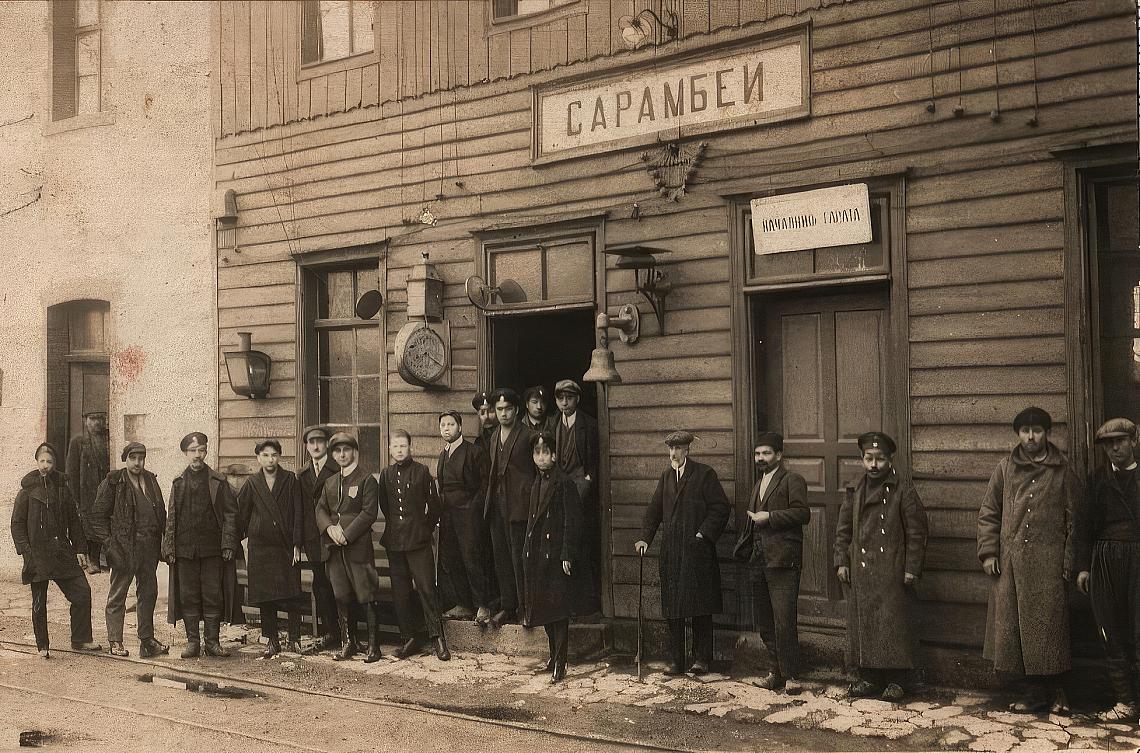
A year later, in 1927, a 3-kilometer stretch was constructed through the farmlands of the Chepinska valley, establishing a connection between the then-villages of Ladzhene and Chepino-Banya, which are now neighborhoods of the spa capital Velingrad.
In 1928, the eagerly anticipated railway section linking Pazardzhik and Varvara was finally completed. On October 27th of that same year, this railway section was officially inaugurated. Thus, the town and its population were connected with the line to Chepinsko and later also to the Razlog region. The section Pazardzhik-Varvara spanned a distance of 16 kilometers and was closed in autumn 2002.
The construction of the longest and most challenging section of the narrow gauge railway, stretching from Velingrad to Yakoruda, required a total of thirteen years. This section spans a distance of 47 kilometers and features the construction of 25 tunnels. The final tunnel is located just before the Cherna Mesta stop. When combined with the first ten tunnels between Varvara and Dolene stations, the entire railway line boasts a total of 35 tunnels.
From St. Petka station to Avramovo station, the narrow gauge line ascends several levels above itself, forming a unique figure-eight shape. This section, known as the "figure eight," has garnered significant attention from tourists worldwide. Avramovo station, situated at an elevation of 1,267.4 meters above sea level, holds the distinction of being the highest railway station on the Balkan Peninsula. At Avramovo station the Rhodope and Rila mountains meet for the first time on the line. Prior to this point, the line had traversed only the Rhodope Mountains. Until 1912, the state border between Bulgaria and the Ottoman Empire was located on the site of today's Avramovo station. Then the lands down to Yakoruda and Razlog were liberated.
After Avramovo station, the route descends into the Mesta valley through two circular loops, referred to as the "sixes," eventually reaching the Cherna Mesta stop. Downstream from the village, the Cherna Mesta and Bela Mesta rivers converge to form the Mesta River. Yakoruda, the first settlement along the banks of the Mesta, is a station on the railway line. From the Cherna Mesta station down the line is routed for normal gauge - no tunnels, with slight curves (bends) and gradients. This alteration was made due to the abandonment due to an abandoned idea for a normal railway line from Sofia through Samokov and Borovets to Cherna Mesta and continuing on to Yakoruda, and Bansko. Trains to and from Yakoruda commenced operation as soon as the narrow gauge section was completed, starting on December 12, 1937.
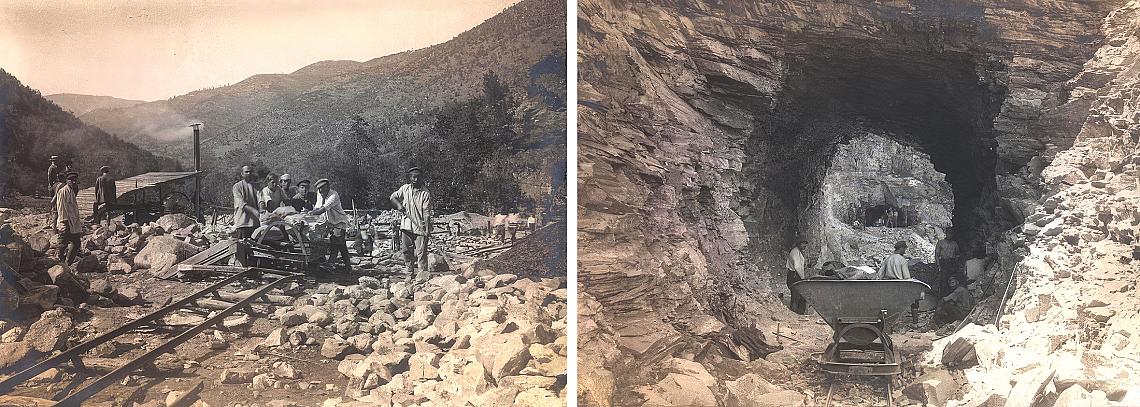
Between 1937 and 1939, the next 15-kilometer section connecting Yakoruda and Belitsa was constructed. On July 30, 1939, the two completed sections from Chepino station (now Velingrad-South station) through Avramovo, Yakoruda, and up to Belitsa station were officially inaugurated. The inaugural train departed from Septemvri station, with the royal family on board. At St. Petka station, Tsar Boris III took control of the steam engine and personally operated the train through the most remarkable section, St. Petka to Avramovo. The journey concluded at Belitsa station, where Tsar Boris III personally recognized and honored the participants involved in the railway line construction project.
On March 3, 1943, the Belitsa-Bansko section was opened, passing through the resort village of Banya and the economic hub of the region, the town of Razlog. Shortly after Belitsa station, there is the General Kovachev stop, named in memory of General Stiliyan Kovachev, who played a crucial role in liberating Pirin Macedonia. Six kilometers away lies the village of Eleshnitsa, known today for its mineral springs and pools.
The final 6-kilometer stretch of the railway line, connecting Bansko and Dobrinishte, was constructed through the voluntary efforts of the residents of Dobrinishte. This section was opened on December 9, 1945. To this day, Dobrinishte remains the last station on the 125-kilometer line, stretching from the Upper Thracian Lowlands through the Rhodope Mountains and Rila to the foothills of the Pirin Mountains.
In the past, there were considerations for extending the railway line to the town of Gotse Delchev and creating extensions from Razlog to Blagoevgrad, from Velingrad to Sarnitsa, and from Kostandovo to Batak and Dospat. However, none of these proposed extensions were realized.
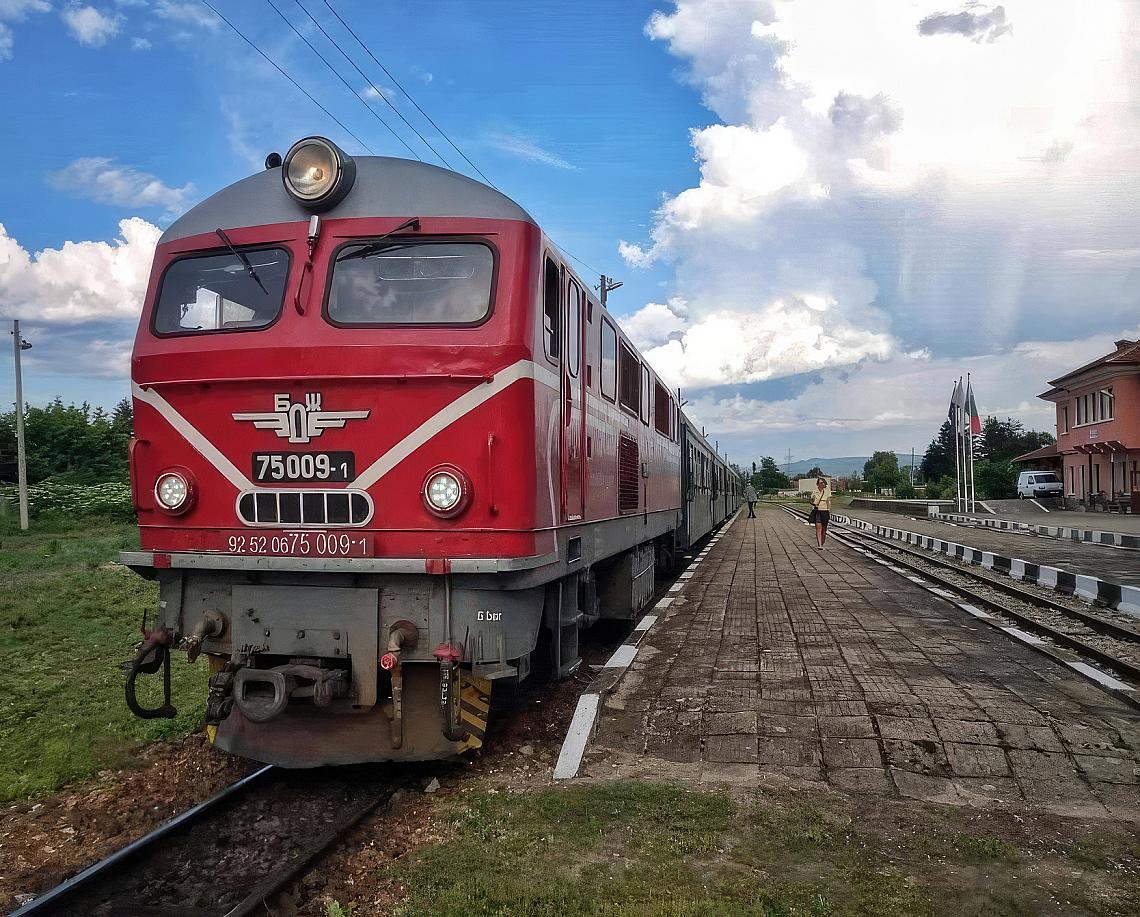
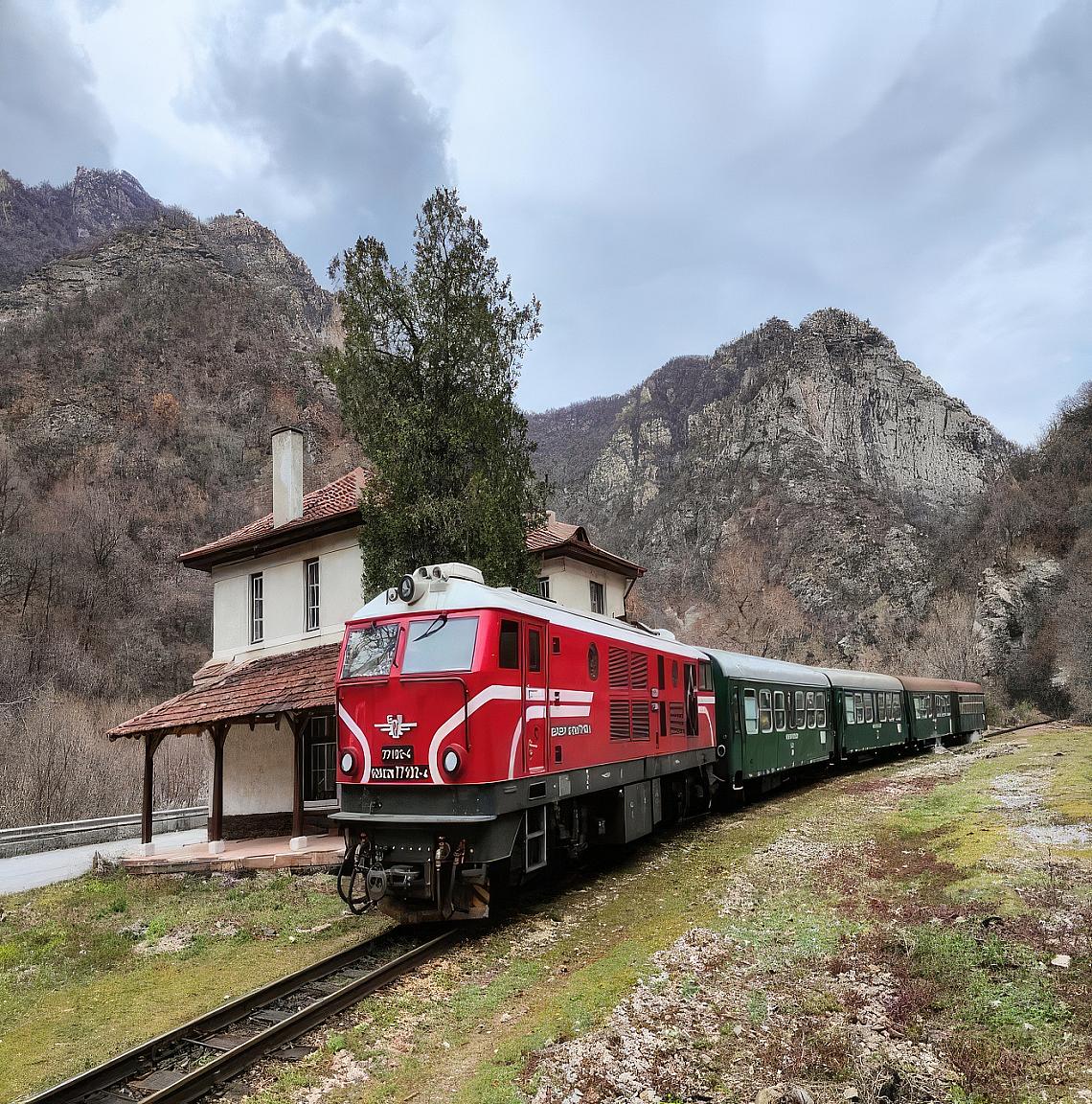
Locomotive series 75, produced in Germany in 1965 and locomotive series 77, produced in Romania in 1988 and modernized in the plant in Ruse in 2022.
Rolling Stock
The first trains on the line were powered by steam locomotives, and the passenger cars featured wooden seats. One of the original carriages from that time has been preserved and is presently utilized for special attraction rides.
The BDZ also has a steam locomotive restored for operation, representative of the last steam locomotives delivered for the narrow gauge line in the past. In the 1950s, the introduction of the first diesel vehicles designed for the 760 mm gauge took place. These were the Hungarian 'Ganz' locomotives, which handled a significant portion of the passenger traffic on the line. Clean, nimble and beautiful, they operated for some 20 years.
In 1965, BDZ started receiving diesel locomotives manufactured in West Germany at the Henschel plant, specifically built to meet BDZ's specifications. These diesel locomotives became the primary traction units on the line and have remained in service to this day. Later, in 1988, BDZ ordered the delivery of an additional 10 diesel locomotives, this time manufactured in Romania. These locomotives were designed based on the specifications of the German machines that were operational at that time.
In 2020, BDZ initiated a modernization project for the last two Romanian locomotives, and by 2023, the refurbishment was completed. One of these locomotives has been in service on the line since the autumn of 2022, while the other is scheduled to commence operations in the summer of 2023.
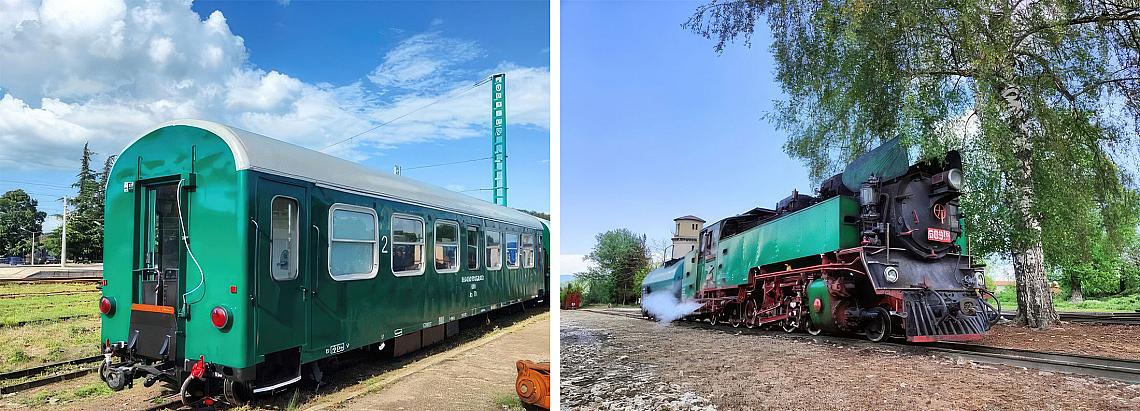
A carriage manufactured in Dryanovo in the 70s and the restored steam locomotive 609.76
In the 1970s, at the request of BDZ, the carriage factory in Dryanovo produced new modern carriages for the Septemvri - Dobrinishte line. These new carriages were equipped with upholstered seats and heating, , making them far more comfortable for passengers than than the old western wagons with wooden benches and wood heating. These carriages have provided passenger trains on the line ever since, being overhauled and modernised every 5 years. Today they are equipped with electrical sockets, LED lighting, comfortable seats with armrests and curtains.
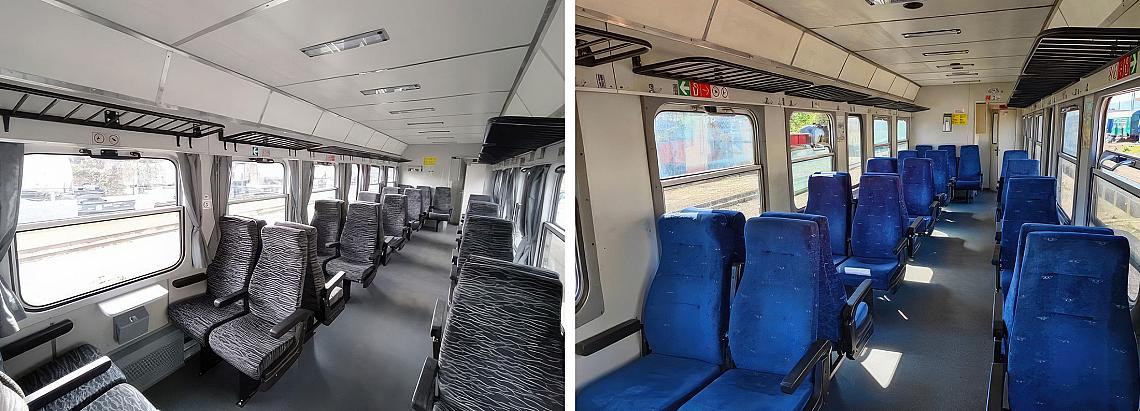
Carriage with new interior from 2021 and carriage with blue seat upholstery from 2023.
Contribution Of The Narrow Gauge Railway To The Region
The Septemvri-Dobrinishte narrow-gauge railway is a transportation link connecting the administrative districts of Pazardzhik and Blagoevgrad, on the territories of which the three ethno-cultural regions of Thracian, Rhodope and Pirin are located. The railway line directly connects the towns of Septemvri, Velingrad, Yakoruda, Razlog, Bansko, and Dobrinishte. Additionally, situated just 4 km away, the towns of Kostandovo, Rakitovo, and Belitsa are also served by railway stations. This railway network caters to a population of over 50,000 people, including those residing in the high mountain region between Velingrad and Yakoruda, where there is no other transport and the train is the only alternative for getting to the larger towns.
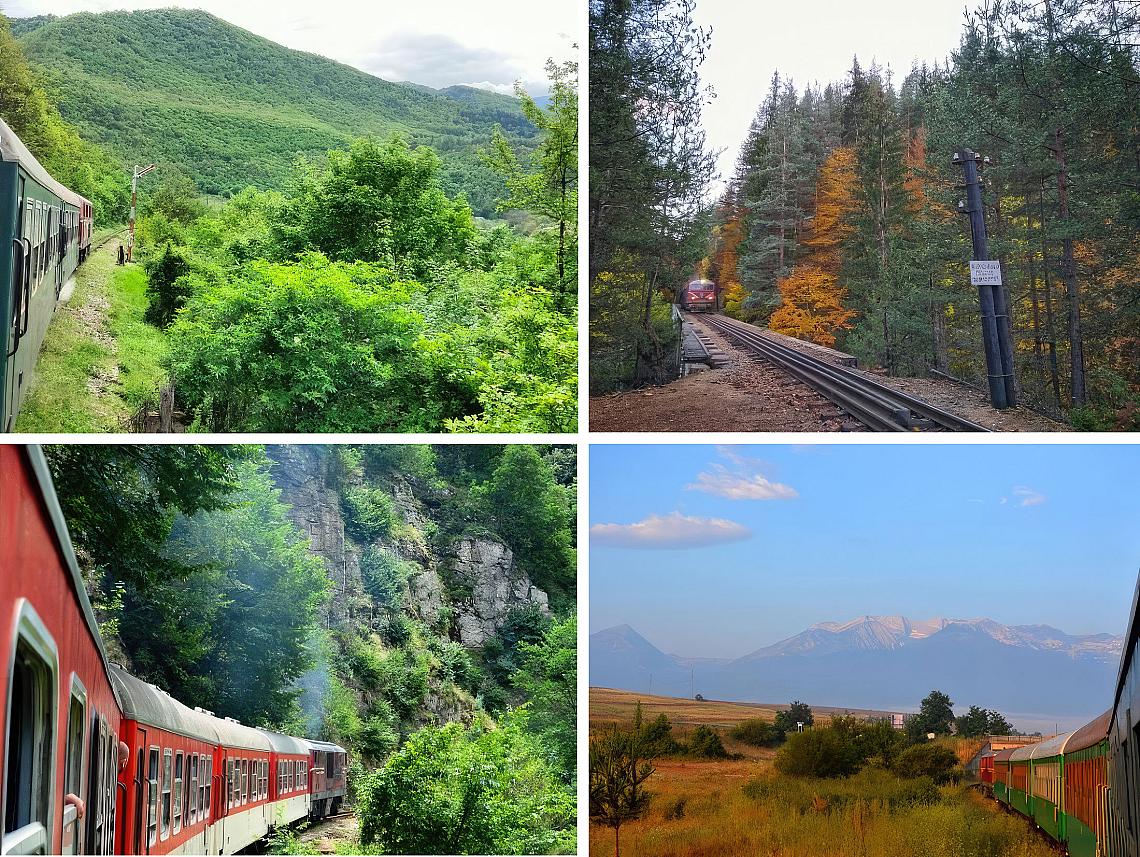
Until the end of the 20th century, the narrow gauge railway line played a crucial role in transporting a large volume of freight, particularly in the period leading up to 1990. It served as the primary means of transporting various goods, such as harvested and processed wood, furniture manufactured from the timber, products from industrial enterprises located in the towns of Velingrad, Yakoruda, Razlog, and Bansko. Additionally, it facilitated the transportation of uranium ore extracted from the village of Eleshnitsa above the General Kovachev station, as well as fuel for petrol stations and enterprises, commodities for shops and households, film strips for cinemas, and much more.
The Septemvri-Dobrinishte narrow gauge railway played a significant role in the social, economic, and cultural advancement of the settlements and their residents along its route. And above all, during the initial decades of its operation, the narrow gauge railway played a vital role in fostering a sense of belonging to independent Bulgaria among the residents of these lands, which had recently been liberated from Turkish rule.



